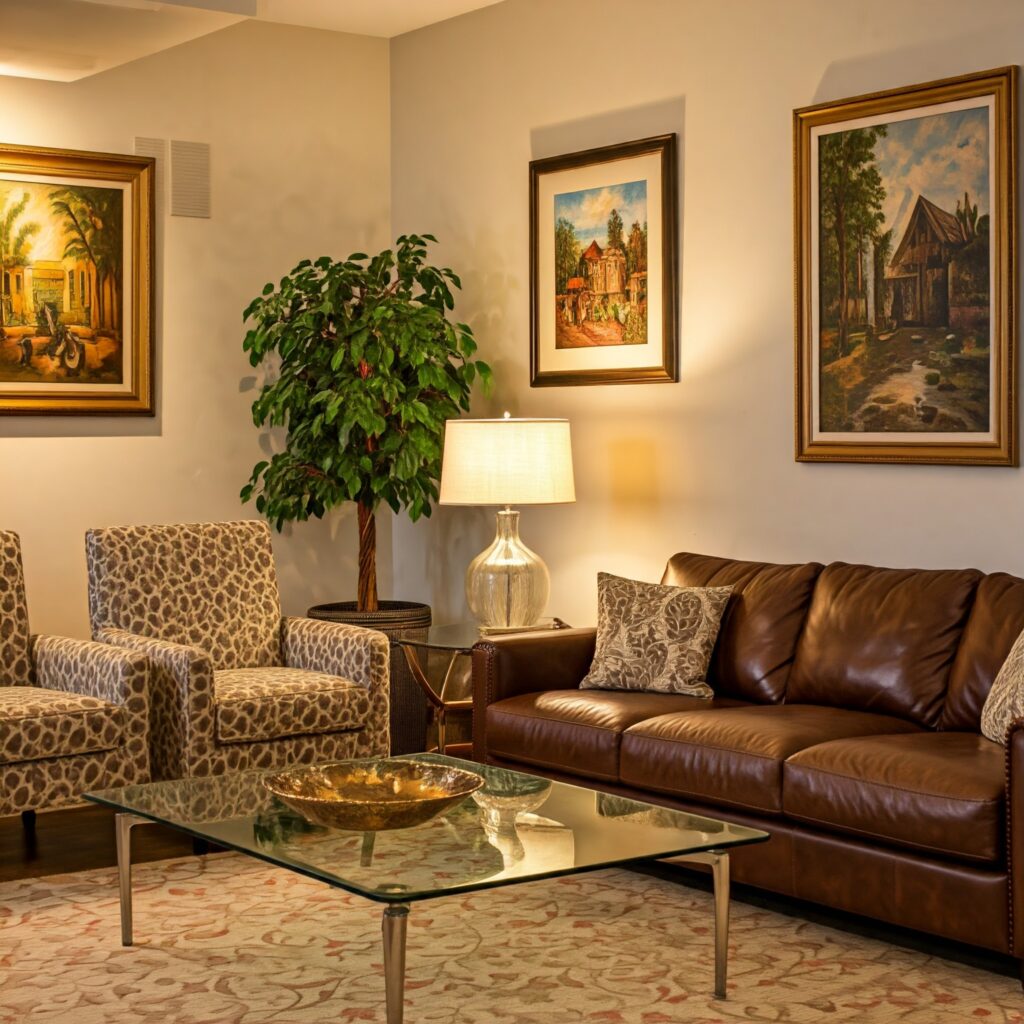HAPPY FALL Y'ALL! --- Check out our HOLIDAY gift ideas!
Finding Harmony in Your Living Room Size: A Guide to Furniture Choices

The living room is often the heart of a home, the place where families gather, friends are entertained, and memories are made. But what happens when the living room size presents challenges? Choosing the right furniture can make all the difference, turning even the most compact space into a haven of style and functionality. This journey into the world of living room size and furniture will explore common pain points, provide creative solutions, and offer expert tips to help you maximize your space while creating a beautiful and inviting atmosphere.
Table of Contents
The Living Room Size Dilemma: Common Concerns and Challenges
1. The “Too Much Furniture” Trap: In an attempt to maximize seating and functionality, it’s easy to fall into the trap of overcrowding a living room. Too many bulky pieces can make a room feel cramped and cluttered, hindering flow and creating a sense of visual chaos.
2. The “Shrinking Space” Syndrome: Small living room size can make the space feel cramped and uninviting. Furniture that is too large or inappropriately scaled can dominate the room, leaving little space for movement and making it feel smaller than it actually is.
3. The “Awkward Layout” Blues: Living rooms with unconventional shapes or architectural features can pose challenges when arranging furniture. Trying to fit standard furniture pieces into an awkward layout can result in wasted space and a disjointed aesthetic.
Living Room Solutions: Creative Strategies for Success
1. Embrace the Power of Scale: Choosing furniture that is appropriately scaled for your living room size is crucial for creating a harmonious and functional space. Opt for pieces with a smaller footprint, such as loveseats instead of bulky sofas, or armless chairs that visually take up less space. Consider using nesting tables or ottomans that can be tucked away when not in use.
2. Multifunctional Marvels: Maximize functionality in a limited living room size by choosing furniture pieces that serve multiple purposes. A storage ottoman can double as a coffee table or extra seating, while a sofa bed provides both seating and sleeping accommodations for guests.
3. Verticality is Your Friend: Draw the eye upwards to create the illusion of more space by incorporating vertical elements into your living room design. Tall bookshelves, artwork hung higher on the wall, and floor lamps with elongated silhouettes all contribute to a sense of height and openness.
4. Mirror, Mirror on the Wall: Mirrors are a designer’s secret weapon for expanding the perceived living room size. Strategically placed mirrors reflect light and create the illusion of depth, making the room feel larger and brighter.
5. Color and Light Play: Light and airy colors create a sense of spaciousness, while dark colors tend to make a room feel smaller. Choose a light and neutral color palette for walls and upholstery to maximize the sense of airiness. Enhance natural light by keeping windows unobstructed, and incorporate supplemental lighting to brighten up darker corners.
Living Room Size and Furniture: A Match Made in Design Heaven
1. Small Spaces, Big Impact: In a small living room size, every furniture choice counts. Opt for pieces with a streamlined design and a smaller footprint to avoid overwhelming the space. A loveseat or a sectional sofa with a chaise lounge can provide ample seating without sacrificing valuable floor space. Choose a coffee table with a glass top or a minimalist design to create a sense of openness.
2. Medium Spaces, Endless Possibilities: A medium living room size offers more flexibility in furniture choices. A full-size sofa can be comfortably accommodated, and you can experiment with different furniture arrangements to create distinct zones for conversation, relaxation, or entertainment.
3. Large Spaces, Grand Gestures: A large living room size provides the opportunity to create a truly grand and inviting space. A spacious sectional sofa, multiple armchairs, and a large coffee table can anchor the room, while additional seating areas or a designated entertainment zone can be incorporated to maximize functionality.
Living Room Trivia: Did You Know?
- The average living room size in the United States is approximately 330 square feet.
- The term “living room” first emerged in the late 19th century as homes became more spacious and a dedicated room for leisure and entertainment became a desirable feature.
- The arrangement of furniture in a living room can significantly impact the flow of energy and conversation.
Living Room Size Harmony: The Final Touch
Choosing furniture for your living room size is about more than just aesthetics. It’s about creating a space that is functional, comfortable, and reflective of your style. By understanding the unique challenges and opportunities presented by your living room size, you can make informed furniture choices that will transform your space into a haven of style and harmony.










